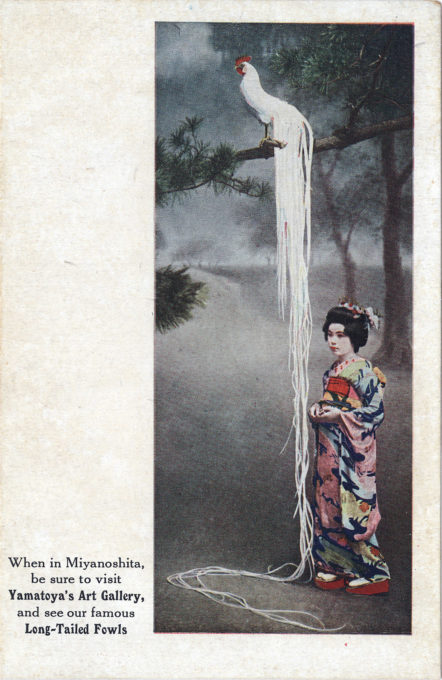“With the Onagadori [long-tailed chicken] of Japan, the males are reared in tall, narrow, dark, restrictive boxes called tombaku. In these conditions the level of molting can be extended beyond what would be seen if the bird were on the ground, so that a bird that molts once in eighteen months on the ground may go from two to three years without molting when caged.
“When the non-molting factor is combined with tail growth factor, one can see incredible lengths of tails. The potential length can be figured as 3′ growth per year x the number of years the bird does not molt and remains in perpetual growth.”
– An Introduction to Form and Feathering of the Domestic Fowl, by Brian Reeder, 2011

“When in Miyanoshita, be sure to visit Yamatoya’s Art Gallery, and see our famous Long-Tailed Fowls”, Miyanoshita, Japan, c. 1920. Yamatoya Art Gallery is long-established store of antique art founded at Miyanoshita, near Hakone, during the Meiji era (ca. 1900). Since its founding, it has been a specialty store for old ceramics, lacquerware and ukiyo-e.
See also:
Miyanoshita Village, Hakone, c. 1910
“Onagadori (“Long-tailed Chicken”) is an ancient breed dating back to the 1600’s. It’s believed the breed was developed from another long-tailed Japanese chicken, the Shokoko, and originated in the Kochi Prefecture of Japan. The Japanese government has designated the breed in Kōchi as a Special Natural Monument.
“… Japanese breeders through the centuries have gone to great pains in the creation and perpetuation of the species. Breeders provide special hutches with perches well above the ground where the tails are kept clean and in good condition.”
– Wikipedia

